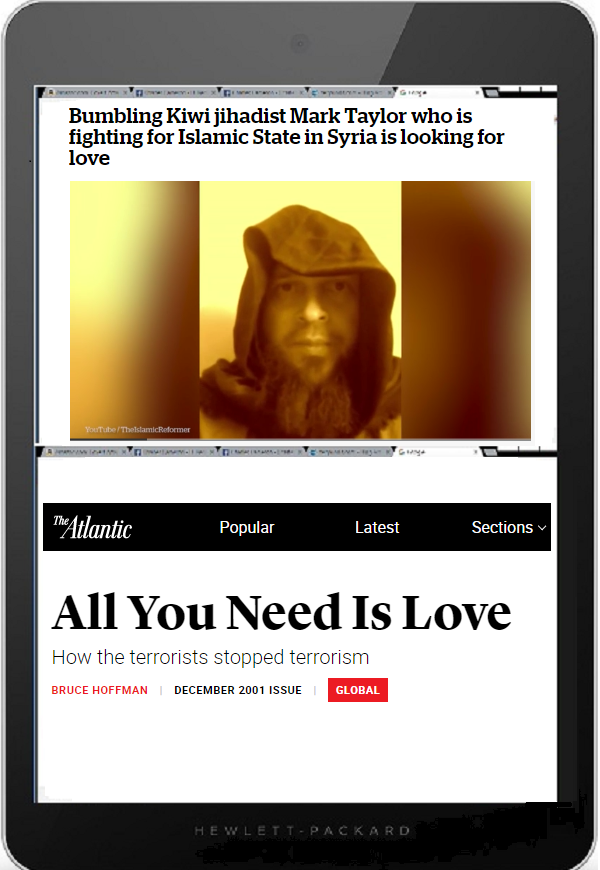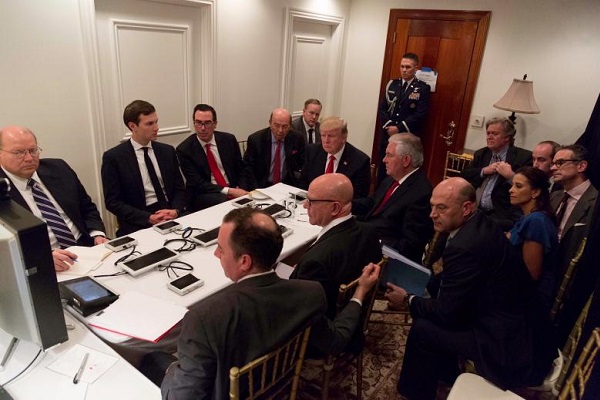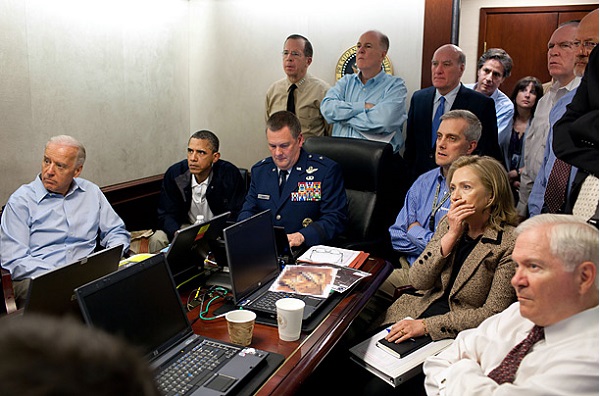The contiguity between churches and mosques in the early Islamic Bilad al-Sham
Saturday, December 2nd, 2017[ by Greg McMurray — a gest post hosted by Charlws Cameron ]
.
It’s ny pleasure to offer ZP readers who may be interested in early and surprising Christian-Muslim relations this essay by our friend Greg McMurray. It is admittedly long, and hey, gets richer as it goes deeper. Enjoy. — Charlws Cameron
Sometime in the mid-7th century, the powerful Umayyad warlord Muawiyah traveled with his family to a simple Christian monastery. Nestled along the Great Zab River in the old province of Adiabene, the monks of Bar Qoqa were well known for their works of wonder. During the Arab conquest, the monastery was a refuge for surrounding villagers who miraculously escaped death because of the prayerful intercession of the holy men. The great Arab commander’s visit was to employ some of that same divine protection for his own family and probably for his own imperial power.
There was one incident at the monastery where, while under siege from invaders, the rising flood waters of the river almost swept the Christians away until the surge was stopped by prayer at the last critical moment. Another story has the Arabs chasing the Christians into a church with no provisions except for a jar of water. The monks blessed the water, and it was transformed into a limitless supply as the Arabs were driven off by other divine actions of fire and fury and phenomenon.(1)
Perhaps the region’s most famous miracle working monk was the Assyrian saint Rabban Hormizd . According to the ancient accounts he had a habit of baptizing “heretics”, which was how they referred to the Muslim Arab invaders. When criticized for it, he responded that baptism was not for believers but for the non-believers. To prove it, Hormizd blessed some water to baptize two children, one Christian and the other Muslim. When he approached the Christian child, the water was mysteriously lost, but when he approached the Muslim child the water miraculously returned to the vessel. Vindicated, he continued baptizing that Muslim child and other Arab “heretics”(2)
Hormizd was also extremely proficient at combining baptism with raising the dead. One particularly fortunate soul was the son of the governor of Mosul. At or around the year 640 AD, he healed the young boy while washing him with blessed baptismal waters. The Governor was so grateful that he immediately submitted to be baptized with this “baptism of repentance… as John gave the baptism of repentance unto the people of the Jews.” The Governor then built the famous monastery bearing the name of Rabban Hormizd.(3)
It was amidst this whirlwind of wondrous baptisms and revivifications that the Caliph Muawiyah entered a few decades later with his daughter. According to the old chronicles she was suffering from a withered arm. After being baptized and prayed over by one of the monks, she was healed as well, confirming for the entire Muslim world the miraculous efficacy of Christian baptism.(4) The “Commander of the Faithful” (as Tom Holland reports him to be called), who counted his Jacobite Christian subjects as full-fledged members of the Faithful, understood that, since the majority of the people he now ruled over were Christians, it would be helpful to work with them and with their beliefs. It was also a shrewd policy to use their theological grievances with the Byzantines to pull them closer to the Arabs and to expand his empire.(5)
Now that we’ve reviewed this brief foray into early Christians baptizing Muslims, we have sufficient background to meander through another related topic which Charles and I briefly discussed this week. That would be the relationship between churches and mosques in Syria after the Islamic conquest, as studied by art historian Professor Mattia Guidetti. Guidetti has observed that early mosques in the major cities often were located alongside churches, and, in some rare cases, inside churches. For our purposes we should direct our attention to the city in western Syria, known to the Faithful as Emessa, but now referred to these days as Homs. Guidetti writes,
“Modern scholars have included the early Muslim house of worship among those obtained by requisitioning a portion of a late antique church. Following the evidence offered in the written sources, the church in Homs is said to have been divided into two parts: one area kept by the Christians and the other used as a mosque. (…)
An octagonal Christian structure has recently been discovered near the Friday mosque. This discovery confirms that the mosque stands on an earlier Christian site but does not help to clarify what really happened after the conquest.”(6)
Professor Guidetti doesn’t want to draw any conclusions here, but it just so happens that we here at Zenpundit are known to do just that on occasion. We can perhaps offer some clarity on this subject. The octagonal structure was obviously a baptistery. There is a hint at this a little further down in the paper where the church is described by an 8th century Christian pilgrim as “the large church built by St Helena, in honour of John the Baptist”. That would be the same John who offered that healing baptism of repentance, and this healing baptism was the avenue on which Muslims made inroads into the culture of the defeated Christians.
Baptisteries have a long history as part of churches. The one found in Emessa probably resembled the picture at the top of the page. This is the Palaeo-Christian Baptistery of Santa Maria Maggiore in southern Spain. It was built in the 6th century in the style of the Byzantine architecture of the day. The eight-sided architecture not only provided sound structural integrity. It provided a spiritual scaffolding as well.
The most common interpretation is that the octagonal shape represents the resurrection of Christ. St. Ambrose is purported to have inscribed on the 4th century baptistery found below the Milan Cathedral:
“Eight-niched soars this church destined for sacred rites,
eight corners has its font, which befits its gift.
Meet it was thus to build this fair baptismal hall about this sacred eight:
here is our race reborn” (7)
A symbol of rebirth that the Arabs used to great effect for their Dome of the Rock mosque in Jerusalem and with their baptistery-like bank vault at the Damascus mosque.
A symbol of the highest ascendency of the select Faithful as in Matthew 25:31-32
And when the Son of man shall come in his majesty, and all the angels with him, then shall he sit upon the seat of his majesty. And all nations shall be gathered together before him, and he shall separate them one from another, as the shepherd separateth the sheep from the goats.
by the intercessions of the most symbolically powerful number in Revelation 8:2-3
And I saw seven angels standing in the presence of God; and there were given to them seven trumpets. And another angel came, and stood before the altar, having a golden censer; and there was given to him much incense, that he should offer of the prayers of all saints upon the golden altar, which is before the throne of God.
Echoed explicitly in the Quranic 69th sura’s “Inevitable Truth” of conquest:
And the angels are at its edges. And there will bear the Throne of your Lord above them, that Day, eight [of them].
The Arab conquerors appropriated architecture and scripture, so it isn’t surprising that they also seized onto sacramental rituals. As we saw in Assyria, the mystical powers attributed to baptism were attractive to the point of bewitching. History professor Jack Tannous writes in his magnum opus dissertation “Syria Between Byzantium and Islam” that sacraments such as baptism and Eucharist were thought to bestow on the recipient supernatural powers and protections.
“People were taking the wooden naqusha — or semantron == and were baptizing it in baptismal waters, a practice Jacob [of Edessa, bishop and monk who translated the Greek bible into Syriac] decried as not even being Christian. The naqusha was being baptized to make it more effective against hail-bearing clouds: people would take it outside and bang on it to prevent hail from falling. They would do the same thing with the cross from churches and the Eucharistic elements. Jacob did permit the use of the naqusha, cross and elements for these purposes, so long as it was done in faith and so long as the naqusha had not been baptized…’Let rather only the waters which are blessed on the night of Epiphany be given for healing and blessing.’”(8)
The baptismal festival of Epiphany, or Eid al-Ghitas in Arabic, became a celebration for Muslims as well as Christians. The Orthodox feast of Christ’s baptism possFaoes doribly has roots in the pre-Christian world. A mid to late winter washing ritual that is performed after the temperatures in the Near East would’ve begun to rise, with rivers still at their nadir and holding the purest waters of the year. It was normal for Arabs to join the baptismal feast because it was a practice that was already ingrained in the peoples of the region.
It became so widespread that by the 12th century a special baptismal rite was established specifically for Muslims. According to Tannous, “Miaphysite Bishop John of Marde prescribed that Muslim children were to be given a different baptism, one for the remission of sins—what he called the ‘baptism of John [the Baptist]’:
There shall only be for them a service of
repentance, that is: a cycle and a prayer and a hymn of repentance, etc. Let the priest baptize the children of the Arabs as he says the following: I baptize this so-and-so in the name of the Lord with this baptism of John for the forgiveness of trespasses and the remission of sins. Amen. And let them anoint them with ordinary oil.
What we have here is an attempt to regulate and control what must have been a very widespread practice.”
It may sound strange to us in the modern West, but considering the political and cultural dynamics of the day, sharing sacred spaces and sacred rituals wasn’t all that unusual in Late Antiquity Syria and Mesopotamia. The region was a crossroads for many cultures in the first place. Islam was a new religion that, despite the beliefs of its most fervent adherents, took several centuries to fully develop while ironically soaking up influences from the tribes it was conquering. Christians who were already divided by obscure theological issues, found themselves cut off from the Byzantine Oikoumene. Some welcomed it, some mourned it, but for all Christians their remaining identity was intertwined with and dependent on their religious community and its rituals. Leaning on them, sharing them, and even wielding them was their key to survival.
Well that’s that. I could probably go on and on about this subject, but I’ve said too much already. Thanks to Charles and Mark for letting me share my ramblings. One addendum that might be of interest to Charles is another bit of comparative culture from Tannous’ book on Sufism,
“Sufism: Massignon pointed out that a number of ‘theological and ascetic’ words used by Sufis were of Aramaic (Jewish or Christian) origin and also pointed to various ‘structural analogies’ between elements of Sufism and Christian and Jewish parallels as well as the fact that ‘a certain number of ascetic Islam’s early works seem to be free transpositions of Christian writings;’ this should come as no surprise, for there is evidence for widespread contact between early Muslim ascetics and Christian monks; in this vein, early Muslim ascetics were fond of quoting Jesus; indeed, the word ‘Sufi’ itself is said to refer to woolen garments worn by Muslim ascetics, perhaps in imitation of the Christian monks whom they interacted with; Muslims themselves made this connection in the early medieval period: ‘Hammad b. Abi Sulayman went up to Basra,’ ‘Abu Nu‘aym al-Isbahano (d. AH 430/AD 1038) reported, ‘and Farqad al-Sabakhi [d. AH 131/AD 748] came to him to him and on him was a garment of wool (thawb suf), and so Hammad said to him: ‘Remove from yourself this Christianity of yours!’; that the first Sufi ribat was established in the hotbed of monasticism that was Syria has been pointed to as another point of contact with Christianity.”(9)
Evidence that fundamental elements of Sufism predate Islam, possibly also predating Christianity.
Bibliography
(1) Wilmshurst (2000) The Ecclesiastical Organisation of the Church of the East 1318-1913 (Corpus Scriptorum Christianorum Orientalium) p.11
(2) Patrologia Orientalis 13 (1919) p.597
(3) Budge (2009) The Histories of Rabban Hormizd the Persian and Rabban Bar-Idta pp.101-103
(4) Patrologia Orientalis 13 (1919) p.594
(5) Holland (2012) In the Shadow of the Sword: The Birth of Islam and the Rise of the Global Arab Empire p.365
(6) Guidetti (2013) The contiguity between churches and mosques in early Islamic Bil?d al-Sh?m p.10
(7) Bowersock, Brown, Grabar (1999) Late Antiquity: A Guide to the Postclassical World p.333
(8) Tannous (2010) Syria between Byzantium and Islam: Making Incommensurables Speak p.301
(9) Ibid pp.497-498










